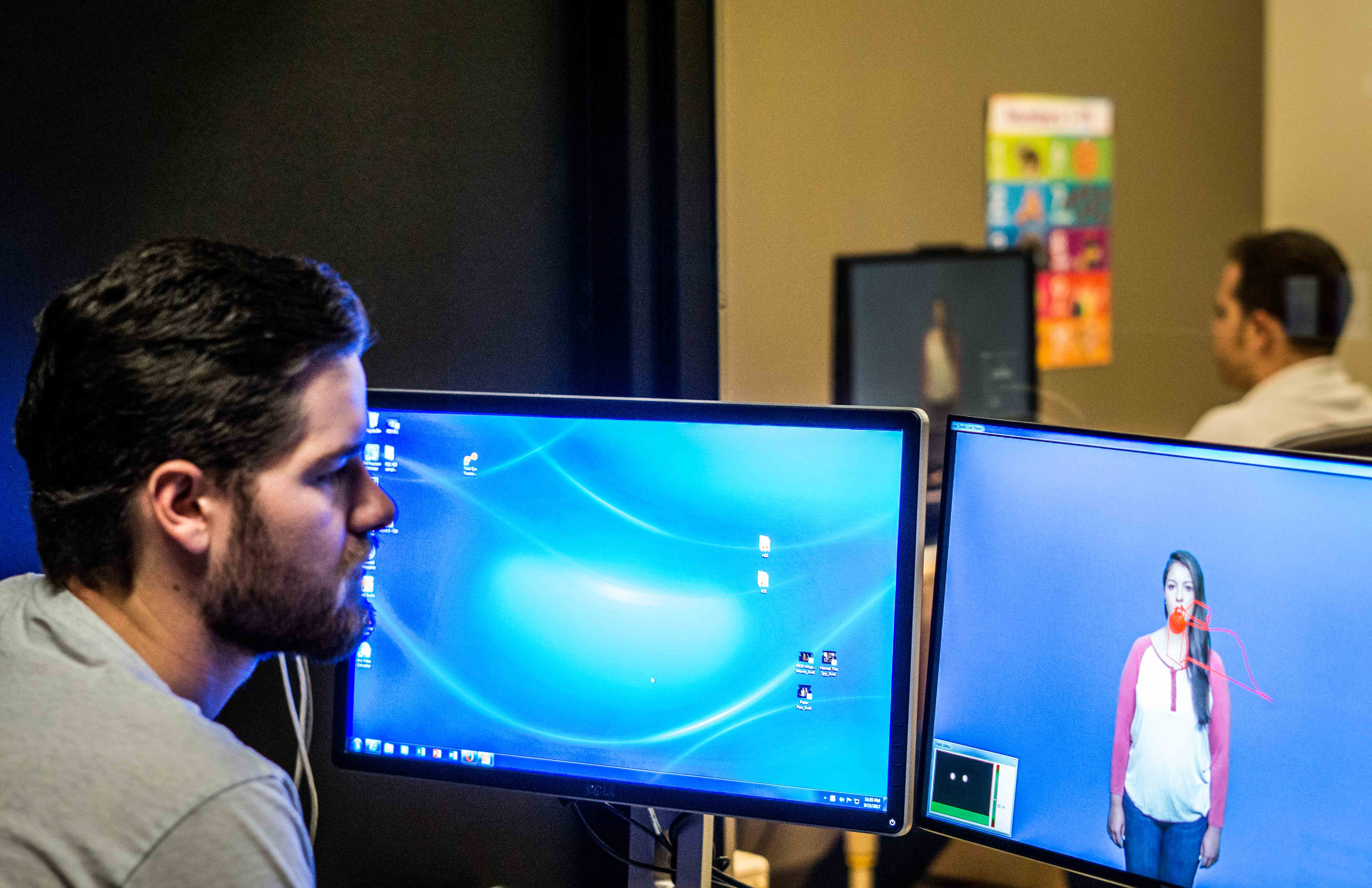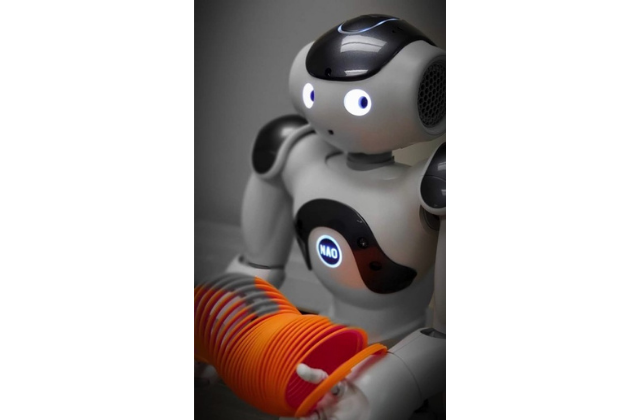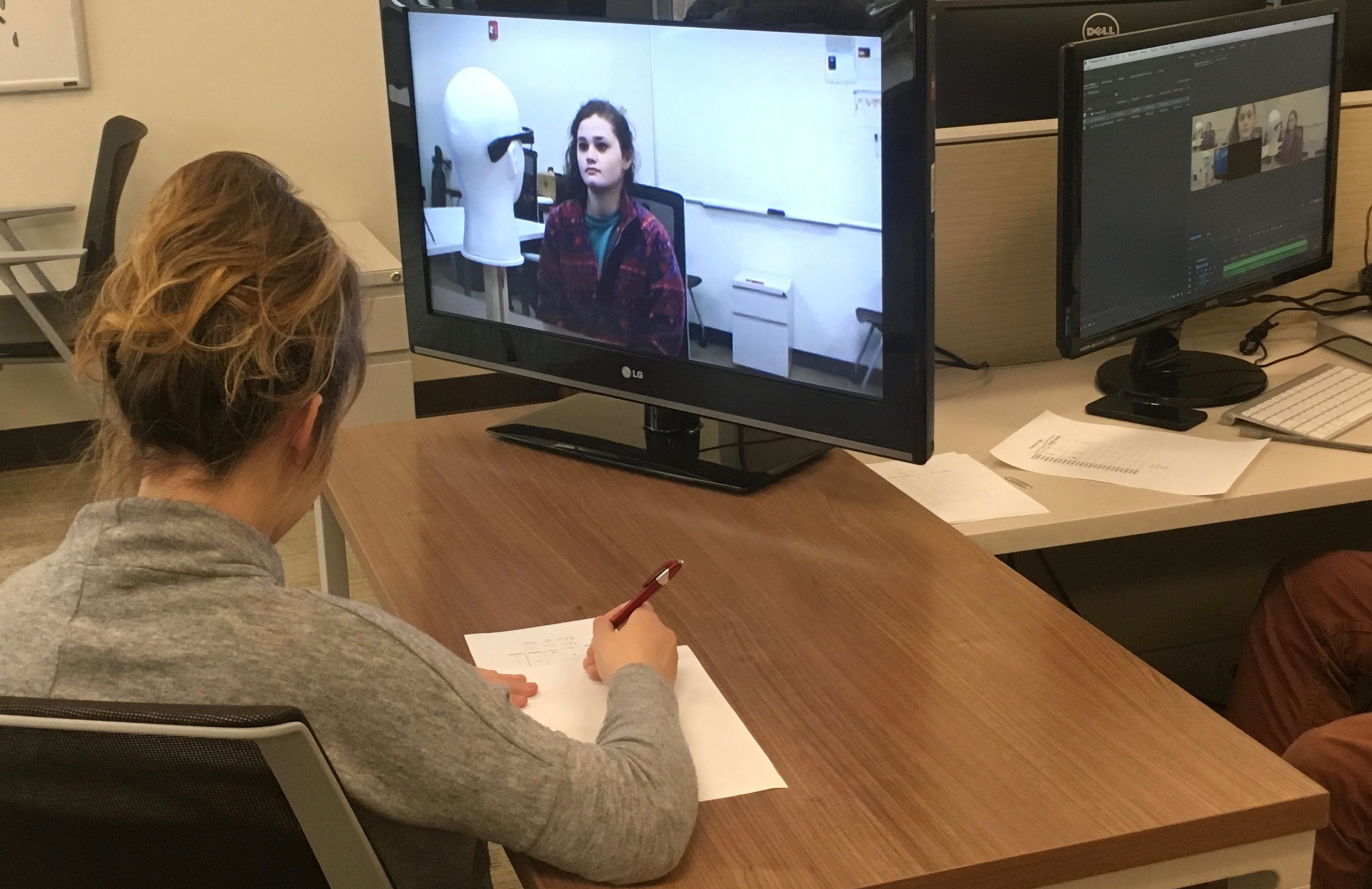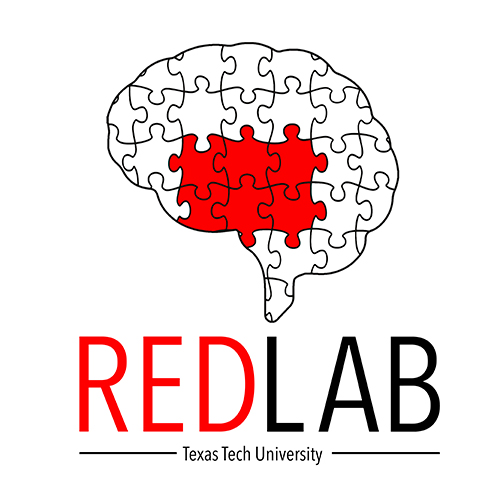Human Development and Family Sciences





Research in Early Developmental Studies (RED) Lab
Research Topics
The RED Lab is dedicated to studying early developmental trajectories of typically developing children, as well as children at risk for developmental delays and autism spectrum disorders. Our research is focused broadly on the following topics:
Visual Attention and Gaze-related Social Communication
Research projects related to visual attention aim to answer questions regarding eye
gaze patterns and engagement with visual stimuli. Using eye-tracking, we are able
to examine visual fixation and duration variables to determine where and for how long
infants and children look at different forms of instruction or brief social scenes.
Increasing the understanding of gaze patterns and attention to visual features may
improve assessment and treatment design in order to promote learning, engagement,
and differentiation between groups of children with and without concerns for developmental
delays, particularly autism spectrum disorder (ASD). Future projects in this line
of research include incorporating measurement of visual attention into possible screening
and evaluation of children's response to social communication interventions.
Parent-Mediated Joint Attention Intervention
Improving the quality and specificity of interventions available for children and
families with ASD is an important line of research in the RED Lab. Current projects
are using evidence-based practices and a team approach to work directly with families
of young children at risk for ASD. With a parent-mediated team approach, researchers
work with families to have parents as active participants in their children's treatment
goals and treatment delivery. Joint attention, the sharing of experiences through
eye gaze, gestures, and language, is one of the foundational skills targeted with
these intervention projects. Parents work collaboratively with research clinicians
to facilitate learning and social communication through engaging social exchanges
with their children. Parents are able to implement strategies throughout many settings
and functional routines with their children in order to provide continuous opportunities
for building adaptive skills and social engagement.
Socially Assistive Robotics (SAR)
Different forms of technology are being used in child development research to better
inform researchers, clinicians, and families on different mechanisms of learning and
attention, as well as potentially beneficial interventions. The RED Lab team is exploring
the use of technology, such as social robotics, to better understand differential
responses to instruction delivery and reciprocal engagement. We are also assessing
the use of social robotics as an intervention tool to promote functional social behavior.
Our team programs our robot to participate in play and conversation tasks with the
goal of capturing attention, sustaining interactions, promoting joint attention, prompting
imitation, and stimulating turn-taking. Current projects related to this technology-focused
research include using our humanoid robot, RayRae, as a social play partner during
parent-mediated intervention activities. Our team is also investigating how children
respond to robot vs. parent speech and movement, as well as identifying other factors
that indicate added value for robots as an intervention tool.
Neuroimaging and Cognitive and Behavioral Factors in Child Development
Additional research projects within the RED Lab seek to identify possible brain-based
patterns and relationships between individuals in at-risk groups, including ASD, ADHD,
and children exposed to poverty. Neuroimaging data collected at Texas Tech and through
secondary datasets provides our team with the opportunity to investigate structural
and functional patterns in the brain that may be related to different cognitive (e.g.,
performance on IQ tests or measures of academic achievement and executive functioning)
and behavioral (e.g., social skills or ratings of hyperactivity) profiles. The RED
Lab is also developing original video stimuli to target research questions specific
to infant-directed speech and infant-directed motion with the intention of sharing
these stimuli with the open science community.
Resilience and Post-Traumatic Growth
Brain structure and function may be permanently affected by adverse life experiences,
however not all infants and children exposed to early adversity will develop stress-related
disorders. Through secondary data analysis, the RED lab is exploring various factors
and patterns of resilience in children and families. Understanding individual traits
as well as qualities and characteristics of relationships may illuminate the complex
way in which children and youth are susceptible to as well as buffered from adverse
life experiences. Future research can continue to illuminate specific factors for
positive growth and the prevention of psychopathology, particularly in high risk families.
Dyadic Synchrony in the NICU Context
Dyadic synchrony is a developmental process relating to the reciprocal serve and return
interactions between caregivers and infants which is strongly associated with the
development of attachment, self-regulation, and cognition. For premature infants,
the process of dyadic synchrony becomes interrupted and irregular due to multiple
barriers including the medical and physiological status of the infant, the emotional
state of the mother, and the physical restrictions of the NICU environment itself.
Currently, the RED lab is exploring the autogenesis of dyadic synchrony in the NICU
setting through focused ethnographic field observations of parent-infant interactional
contexts. These observations will inform future research designs to measure the temporal
patterns and fluctuations of the components of dyadic synchrony (e.g., congruence,
mutuality, adaptation) as they occur in the NICU context.

- Home
- Meet the Team
- Research Topics
- Publications and Presentations
- Media Coverage
- Collaborations
- Join our Team
- Participate in RED Lab Research
Contact
Gabriella M. Garcia, B.A.
RED Lab Manager
Email: gabriella.m.garcia@ttu.edu
Phone:(806)-834-6090
Human Development and Family Sciences
-
Address
Texas Tech University, P.O. Box 41230, Lubbock, TX 79409-1230 -
Phone
806.742.3000 -
Email
hs.webmaster@ttu.edu
